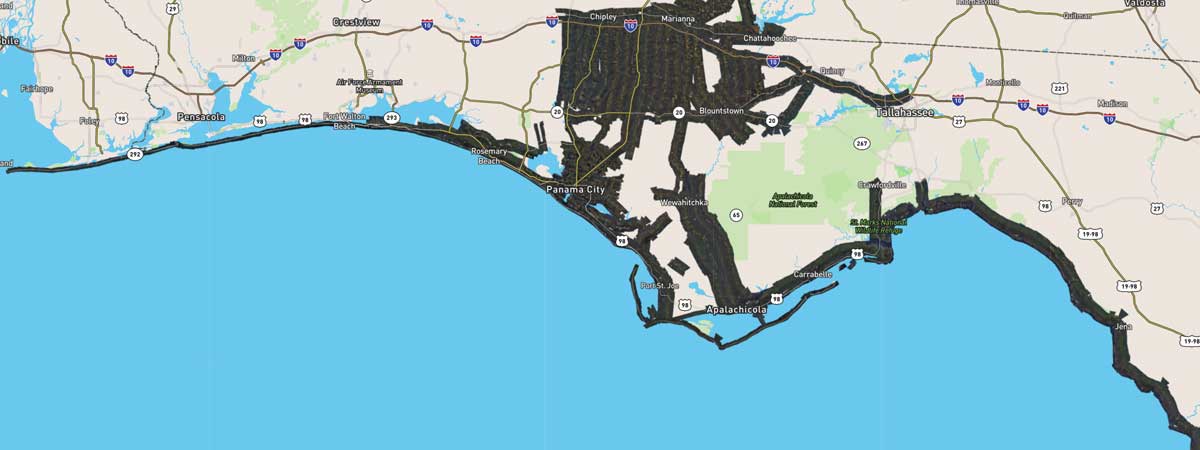To acknowledge the importance of Geographic Information Systems (GIS) in the world today, we celebrate GIS Day annually on the second Wednesday of November. GIS Day provides an international forum for users of GIS technology to demonstrate real-world applications that are making a difference in our society.
GIS, aided by consistent geospatial reference frames, makes possible some of the National Geodetic Survey’s (NGS) most important work. In October 2018, for example, NGS collected aerial damage-assessment imagery of areas affected by Hurricane Michael. This imagery aids safe navigation and captures damage to coastal areas caused by a storm — and is a crucial tool to compare baseline coastal areas to assess the damage to major ports and waterways, coastlines, critical infrastructure, and coastal communities. Above all, it's a cost-effective way to better understand the damage sustained to both property and the environment. You can view NGS aerial imagery online via the GIS-driven NGS aerial imagery viewer.
Geospatial data is becoming more accurate every day, so precise positioning will continue to become more important as time goes on. As the world begins to build smart highways and smart cities, society will increasingly rely on consistent reference frames and GIS technology.
The importance of geospatial data is also being recognized at the federal level, as just last month President Donald Trump signed the Geospatial Data Act of 2018 (GDA) into law. The wide support for the GDA from many different stakeholders across the geospatial community reflects growing recognition of the essential role of geospatial data and technology.
Today, NGS is increasing our internal use of GIS for various applications, including analyzing imagery and LIDAR data; designing popular map projections like the new State Plane Coordinate System; and evaluating survey control networks to improve our next gravity-based model, which will allow users to compute accurate heights from GPS coordinates.
NGS is also using GIS more frequently to share information with our customers. For example, NGS used ArcGIS Online maps to help public partners coordinate survey efforts and contribute to our GPS on Bench Marks Campaign. And, we are using GIS to help visualize expected coordinate changes when NGS releases new datums in 2022. The expansion and adoption of GIS technology across sectors has already helped increase the awareness and use of the NGS-defined National Spatial Reference System, and it will continue to do so in the future.
Juliana P. Blackwell
Director, National Geodetic Survey
National Ocean Service
 An official website of the United States government.
Here's how you know we're official.
An official website of the United States government.
Here's how you know we're official.

